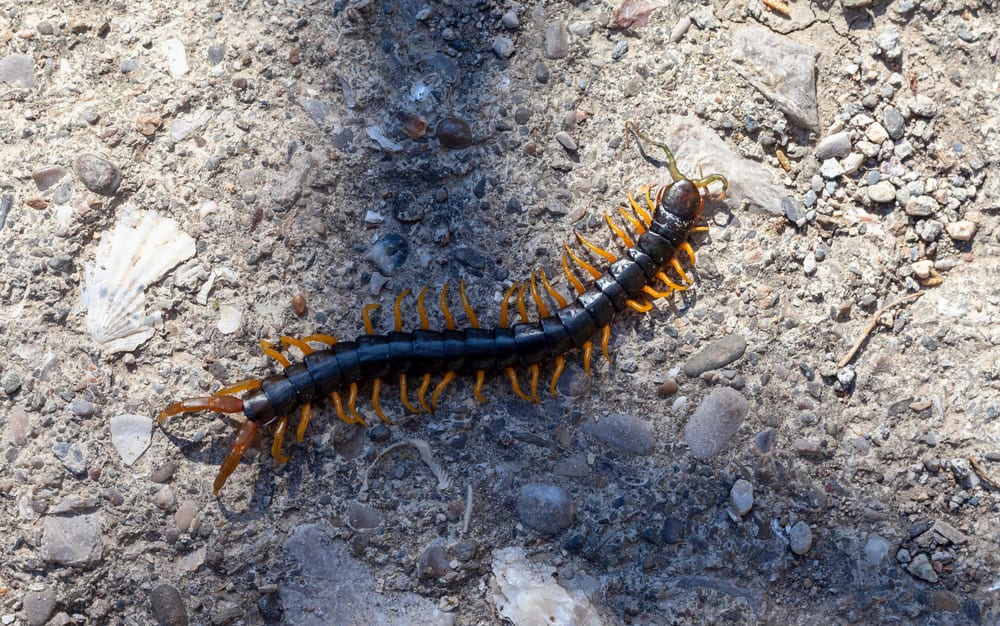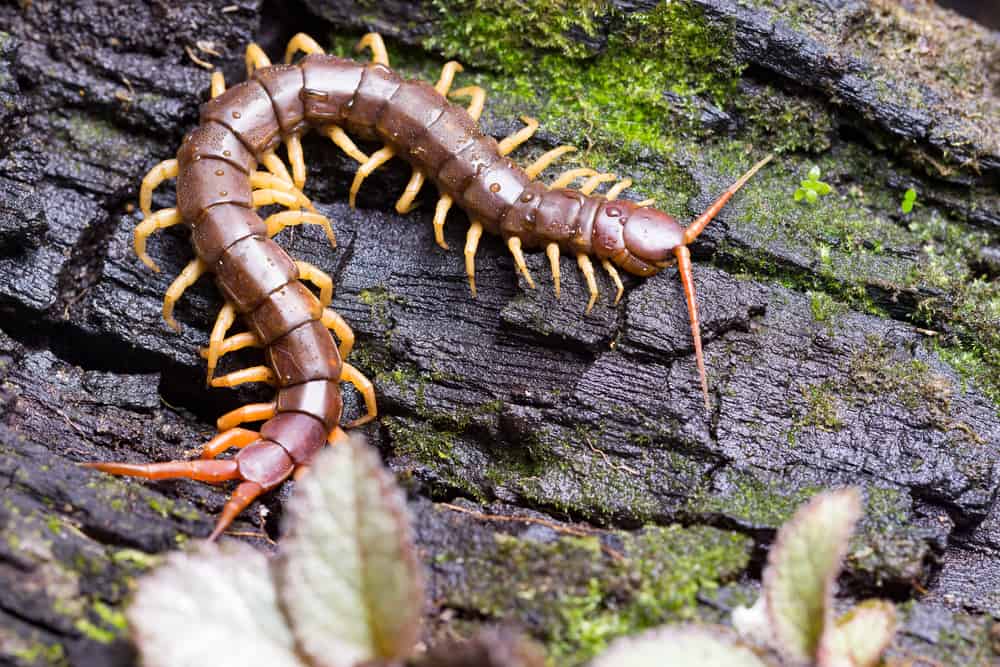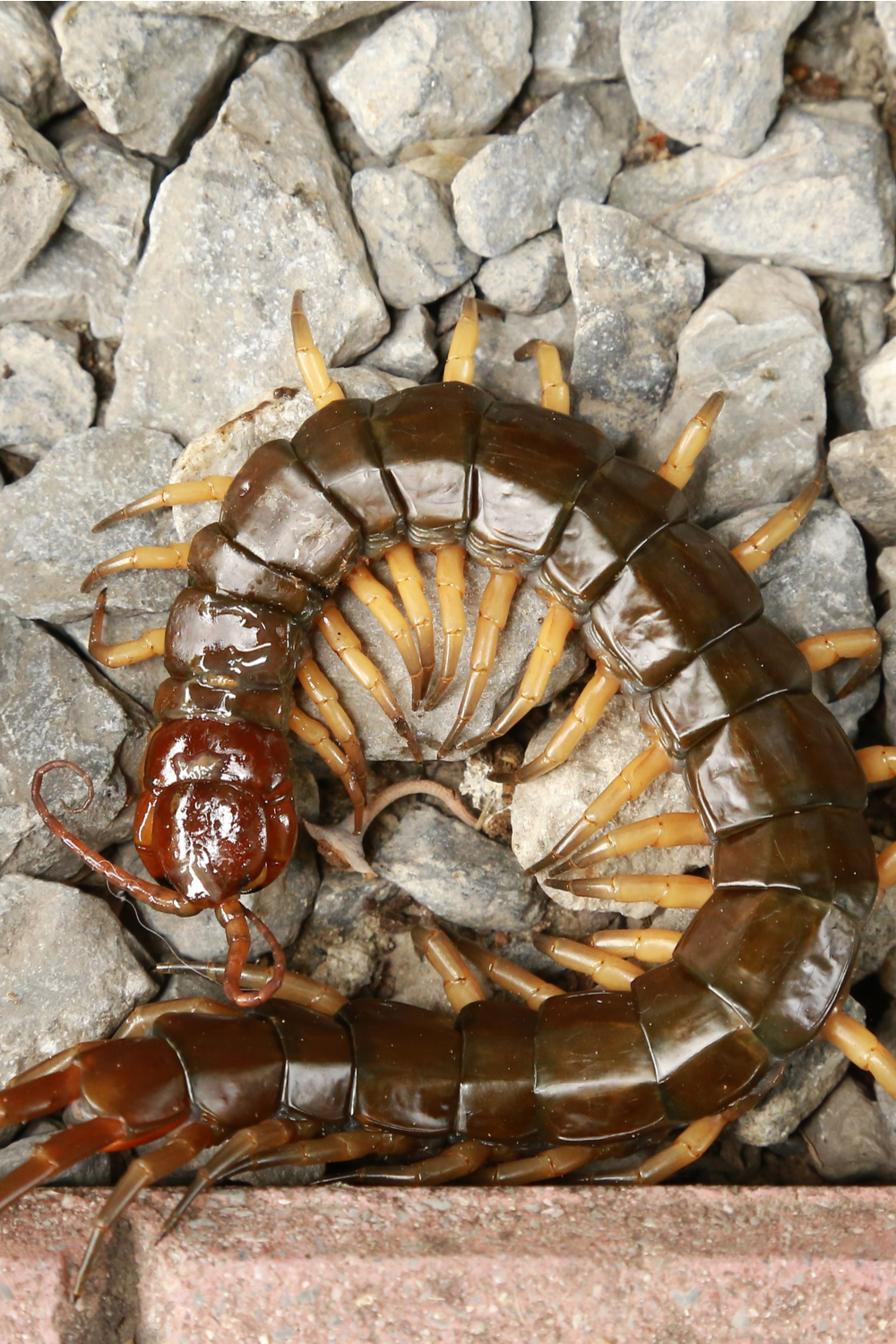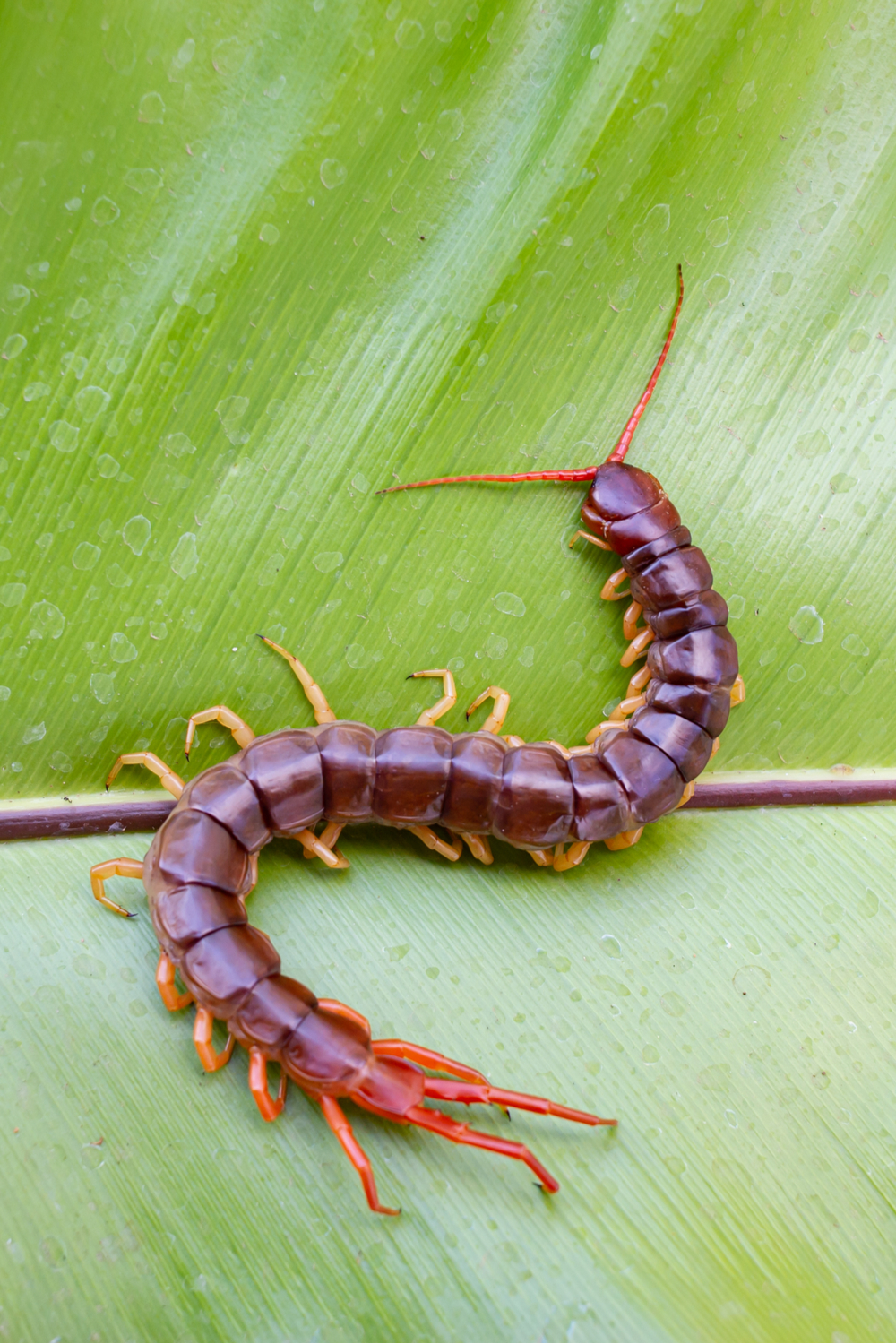Have you ever encountered a centipede at home? It may be an experience you never forget. With their ‘gazillion’ legs and creepy bodies, the sight of them is enough to scare even the most tolerant of people. They are drawn to your house in search of food, begging the question, ‘what do centipedes eat?’
What Do Centipedes Like To Eat?
Centipedes are generalist predators in that they eat what’s available in their surroundings. However, they are predominantly carnivores. From arthropods like small insects to other small invertebrates, centipedes are meat lovers.
Centipedes actively seek food and are always on the lookout for prey.
Their venom enables them to subdue prey by injecting toxins into their bodies using two front legs near their head called forcipules. This venom paralyzes prey. Centipedes have poor vision and rely on their antennae to find meals.
They also have incredible speed, which helps them capture prey.
Contrary to popular belief, centipedes don’t ‘bite’ their prey; they instead pierce them.
Centipedes can eat dead prey. They also possess cannibalistic tendencies. Some female species of centipedes are known to eat their eggs. On the flip side, some offspring can also turn on their mothers and eat them.
Foods that centipedes eat in the wild and your house vary. For starters, wild centipedes are larger than house centipedes and more deadly. That said, they are both nocturnal and actively seek food at night.
Centipedes grasp their prey and wrap themselves around them before injecting them with venom. They then proceed to eat them with their ‘teeth’ known as mandibles.
You can find house centipedes in your home. They are small and once inside your house, are in no hurry to leave. House centipedes love to feast on household pests. Some of their favorite bugs or insects are:
- Spiders
- Cockroaches
- Worms
- Ground beetles (light attracts them to homes)
- Moths
- Mites
- Crickets (though mostly found outside, they can make their way indoors)
- Bedbugs
- Silverfish
- Termites and Ants
- Flies
- Snails and slugs
What about more enormous centipedes found in the wild? Larger centipedes can attack bigger prey. Did you know that the largest known centipede is the Amazonian giant centipede? It has a length of about 10 inches or more.
You can find giant centipedes in tropical rainforests in South America.
Larger centipedes can attack bigger prey as they are more venomous. Some of the prey are:
These centipedes also eat insects like spiders and small invertebrates.
Centipedes can also find shelter in the garden, and here they eat insect larvae and small soil animals. You can also find them in potted plants. If you intend to bring these plants indoors, be sure to eliminate any centipedes inside the pots.
Harm of Centipedes
Centipedes venom can pack a punch! You may be asking yourself, ‘can centipedes bite human beings?’ The answer is yes. Though relatively rare, it is possible. If you provoke them or mishandle them, centipedes in their defense can bite you.
Technically, centipedes don’t ‘bite’ you as they don’t have teeth. Their two front legs, which look like ‘claws,’ are what contain venomous glands.
Keep in mind that some small centipedes are not strong enough to penetrate human skin. The larger the centipede, the more pain you’ll feel.
Though a centipede may not pierce through your skin, there will still be an effect if they scratch against your skin. Centipede bites aren’t fatal to humans.
What are some of the symptoms of a centipede bite on humans? A list of possible symptoms to watch out for according to certified medical doctors are:
- Swelling around the bite area
- Redness in the affected area
- Itching
- Pain
- Blisters
- Bleeding
- Tingling
These symptoms can take up to a few days to heal and don’t need emergency care at the hospital. In rare situations, some suffer from an allergic reaction when bitten by a centipede. In such a scenario, the victim should seek immediate medical attention.
Symptoms from an allergic reaction include:
- Hives and rash on the skin
- Loss of consciousness
- Difficulty breathing
- Fast heart rate
- Fever
Tips to Get Rid Of Centipedes
If you invite a centipede to a party where water and bugs are on the ‘menu,’ be sure they’ll come. Centipedes like to stay in places that are dark and damp during the day. They usually lose water through their skin and need it to survive.
Without water, the centipede essentially dries out and dies.
If you find that you have centipedes in your home, this may be a clear indication of a pest problem.
Centipedes are unsightly and are unwelcome ‘guests’ in your house. Places in your home where you can find them include:
- Floor drains
- Sinks
- Bathrooms
- Laundry rooms
- Basements
- Crawl spaces
- Kitchen
- Attic
To eliminate centipedes and keep them away from your house, you should get rid of their food source –this means getting rid of bugs that may be present at home.
Follow the below guidelines to eliminate centipedes already in your home and prevent more of them from entering your house:
- Remove any debris, clutter, and boxes from your house as centipedes use them to stay hidden while searching for food.
- Use a dehumidifier or fan in humid areas in your home. Dehumidifiers reduce moisture in your house, and keeping your house dry is vital for centipede elimination. For example, you can effectively use an exhaust fan to move moisture out of your bathroom and kitchen.
- Inspect the exterior of your house to check for entry points. After that, seal gaps, cracks, and crawl spaces in your place that could serve as entry points for pests, including centipedes. Also, inspect doors and window frames for possible entry points.
- Small insects can enter your house through crevices in the walls. Seal these as well.
- Don’t forget to inspect your home’s foundation; it can have cracks or openings enabling pests to enter your home.
- Repair places with excess moisture, e.g., hidden leaking pipes, leaking tubs, or leakage under your kitchen sink.
- If there are a lot of spiders present at home, remove their cobwebs –this action can kill off spiders. As you know, spiders are a favorite food for centipedes.
- Pests like cockroaches are attracted to dirt. Therefore, keep your house roach-free by cleaning crumbs of food that may be in the drawers, shelves, under the sink area, e.tc.
- In general, give your house a good cleaning to draw centipedes out from their hiding places. You can use a high-powered vacuum cleaner to clean hard-to-reach spots in your home.
- If you bring in potted plants to the house for winter, kill centipedes by immersing the pot in a bucket of soapy water. Wait for a maximum of 30 minutes and take the pot out. Centipedes will have drowned by then –the type found in pots can’t swim.
- To kill ants in your home, mix a vinegar-water solution in a bottle and spray the area you spotted them. Also, trim any shrubs or bushes that can help ants gain entry into your home.
- Outdoors, centipedes like to hide in damp areas under rocks, leaves, logs, and tree bark. Get rid of these hiding places. Other centipedes habitats include compost piles, woodpiles, and mulch.
- Clear dead leaf piles and ensure there isn’t any standing water on your lawn.
- Please don’t store mulch and firewood on the side of your home –they can gain access to your house.
- For a serious centipede infestation, consider using insecticides to kill them. You can choose to do it yourself or, if your budget allows, hire a pest control expert–an added benefit is that insecticides can also kill other pests like roaches.
Professional exterminators can also locate centipedes eggs around your home and destroy them. A female centipede can lay over 10 eggs.
- Please note that insecticides offer a temporary solution to the problem. Read the label carefully before use.
- You can also use homemade sticky traps in your house to catch centipedes. However, sticky traps work best with smaller centipedes. Place them in corners and other areas where you’re likely to find them when they come out searching for food at night.
- The use of coffee grounds and cayenne pepper are natural ways to repel centipedes trying to enter the house.
Frequently Asked Questions
How many legs do centipedes have?
Centipedes have between 15 to over 300 legs. They always have an odd number of legs in all species. Also, centipedes have only one pair of legs per body segment.
Are centipedes insects?
Centipedes are not insects. They are myriapods and belong to the class Chilopoda. However, they are distant cousins to insects.
How fast are centipedes?
House centipedes’ legs are very long. Their many legs assist them in moving very fast. It isn’t easy to catch a centipede. When you spot one, before you realize it, it quickly moves out of sight.
The house centipede can run 16 inches a second!
Summary
Getting rid of centipedes doesn’t have to be a complicated affair. You can prevent and kill them by keeping your home dry, identifying and destroying hiding places, and using insecticide. Above all, ensure you eliminate the one thing they love most –bugs.
After this, they won’t stick around for long.
Don’t let centipedes ‘run’ you out of your home!




I like centipedes. There are just 2 occasionally in my home. They don’t bother me and vice versa.